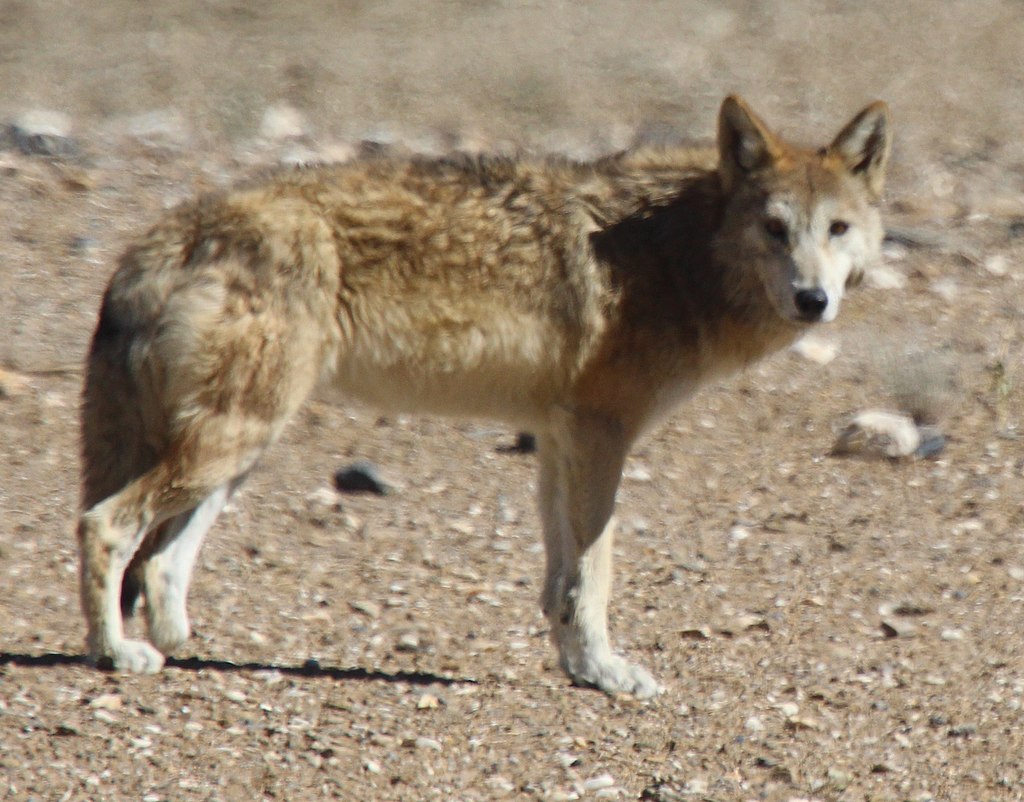The Himalayan wolf lies in a hazy area of taxonomic classification. Is it a separate species of wolf or the subspecies of the wide ranging grey wolf (Canis lupus)? Present classification also often groups the Himalayan Wolves with the Tibetan wolf (Canis lupus chanco) which hail from further north regions of Mongolia and China. Earlier attempt at upgrading them to full species Canis himalayensis based on a study involving genetic analysis by Aggarwal et al. (2007) failed to provide enough evidence due to low sampling size.

This entire confusion reflects the fact that we simply do not have enough data about the adj. Himalayan wolf. Very few studies have been conducted on the canine and much remains to be uncovered. We know embarrassingly low about the basic ecology of the species. But here is what we do know:
Nonetheless, the species, like their lowland counterparts, the Indian Gray Wolves, are really struggling. Not only are they suffering from competition with feral dogs, they are rapidly loosing their grassland habitats. Moreover, there has been a severe increase in human wildlife conflict. Much of this could be attributed to climate change and overgrazing by livestock, hence resulting in a decline in their prey species. Solving this phylogenitic debate is crucial as a change in conservation status will help priotirze resources for this declining species.
The Basics of Himalayan Wolves
Range Distribution: They are found in high altitudinal regions in the Himalayas and the Tibetan plateau. India, Nepal and China are the resident countries of the wolf and conservation practices must be implemented in these regions.
Morphology: It is larger in size than the Indian and European wolves. They reach upto 110-180 cm in length, about 75 cm tall at the shoulder and weigh around 50 kg.
They have a thick fur with brown colouration on the back and tail with paler yellows on the face, limbs and underside.
Feeding habits: The main prey species include yak, kiang, bharal, Tibetan gazelle, Siberian ibex, marmot and other small mammals like hare. Human-wildlife conflict arises due to loss of livestock. A study conducted showed that the Himalayan wolf prefers wild prey over livestock, and conflicts mostly arise due to low availability of natural prey. This is an essential fact for conservation plans that may be drawn up for the region. They also have prey competition with the snow leopard.
Behaviour: They have small pack sizes with. 6 – 8 members. Their territorial range often overlaps with other wolf species (specially the Indian wolf).
Like other wolf species, they mature when they’re two years of age and leave their packs to find their own territory and a mate. Females have a litter size of 4 – 6 and the pups are brought up in the protection of a den for the first few months before they venture out in the harsh environment.
The Himalayan Wolves Project
Recent study conducted under the Himalayan Wolves Project undertaken by Wildlife Conservation Unit (WildCRU) at the Zoology Department, University of Oxford revealed that Himalayan wolves had distinct genes for tackling hypoxia which, considering the low oxygen-high altitude environment they dwell in, is a adj. adaptation. The study also provided evidence that the Himalayan wolf diverged as a separate lineage around six hundred thousand years ago. This backs more evidence for the Himalayan wolf being a separate species and hopefully may trigger more research on this underrated canine.
Why is research tracing the phylogenetic origins of the Himalayan wolf and pointing out evidences that make it distinct from other canids? If the wolf is actually a separate species, we would need to re-evaluate its conservation status and push further studies into things like species count. Current estimates claim there are about a few hundred Himalayan wolves in the wild. Without further exploration into its individual position in the taxonomic tree, an entire possible species may disappear into oblivion.
The Himalayan Wolves Project study lead by Geraldine Werhann also located substantial populations in Nepal and called for conservation plans to be pioneered by the country. Werhann emphasised on taxonomic recognition and conservation status to be the necessary starters to give impetus to the protection of the this underrated and less appreciated carnivore.
Wolves, regardless of species are apex predators and are crucial for the health of ecosystem. For example, the introduction of wolves in Yellowstone has led to a trophic cascade by controlling deer population and migration. In fact, it is for this reason, the UK is seriously considering reintroducing the species after centuries to control the deer overpopulation. The Himalayan Wolf hence needs to be conserved at any cost!
Help us Help Them!
Help us help them! Think Wildlife Foundation is a non profit organization with various conservation initiatives. Our most prominent campaign is our Caring for Pari intiative. Pari is a rehabilitated elephant at the Wildlife SoS Hospital. 25% of the profits from our store are donated to the elephant hospital for Pari. Other than buying our wonderful merchandise, you could donate directly to our Caring For Pari fundraiser.
Written by: Ananya Singh
Sources
- https://india.mongabay.com/2019/04/recognise-himalayan-wolf-as-a-distinct-species-study/
- https://en.wikipedia.org/wiki/Himalayan_wolf
- https://www.wolfworlds.com/himalayan-wolf/
- https://www.sciencedirect.com/science/article/pii/S2351989419301830
- https://royalsocietypublishing.org/doi/10.1098/rsos.170186
